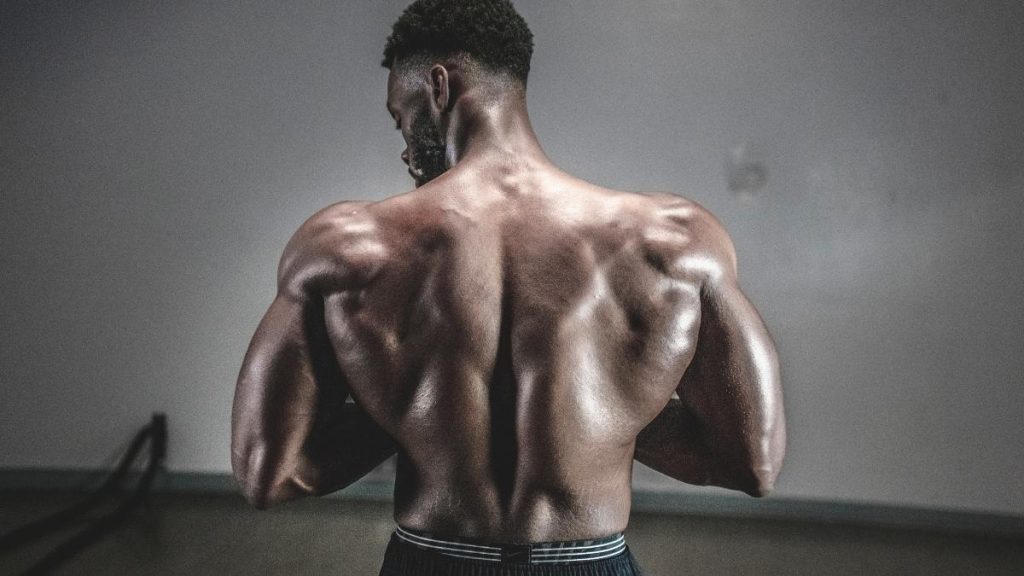Building a well-defined upper back enhances physical appearance and plays a crucial role in posture and overall upper body strength. Upper back exercises, for definition, emphasize muscle growth and fat reduction through targeted movements. This article dives into the top exercises to define your upper back, effective workout techniques, and tips for maximum gains.
Why Is a Defined Upper Back Important?
A defined upper back supports posture, improves strength, and enhances body aesthetics. Strong upper back muscles reduce the risk of injury, particularly in the shoulders and spine, as they provide better stability during various movements. Incorporating upper back exercises into your routine can lead to noticeable changes in your muscle tone and overall body balance.
What Are the Key Muscles of the Upper Back?
Understanding the primary muscles targeted in upper back exercises can help maximize your workouts. The main muscles include:
- Trapezius: Crucial for shoulder stability and neck movements.
- Rhomboids: Located between the shoulder blades, aiding in pulling movements.
- Rear Deltoids: Essential for shoulder and upper back mobility.
- Infraspinatus: Part of the rotator cuff, stabilizing shoulder joints.
Top Upper Back Exercises for Definition
Here’s a breakdown of some of the most effective upper back exercises to build definition.
1. Barbell Row
- How to Do It: Stand with feet shoulder-width apart and hold a barbell with an overhand grip. Bend slightly at the knees, hinge at the hips, and pull the bar towards your chest, squeezing your shoulder blades together.
- Benefits: Targets the rhomboids, trapezius, and rear deltoids for a comprehensive upper back workout.
- Tips: Maintain a flat back and avoid jerking the bar to prevent lower back strain.
2. Face Pulls
- How to Do It: Use a cable machine with a rope attachment to set the rope at eye level. Pull the rope towards your face, elbows high, and focus on squeezing the shoulder blades together.
- Benefits: Strengthens the rear deltoids and upper trapezius, enhancing shoulder stability.
- Tips: Keep your elbows high and your hands spread as you pull for maximum activation.
3. Seated Cable Row
- How to Do It: Sit at a cable row machine with slightly bent knees. Grab the handle with both hands and pull it towards your torso, squeezing the shoulder blades together.
- Benefits: Engages the rhomboids, traps, and lats for balanced upper and middle back development.
- Tips: Avoid leaning too far back; focus on pulling with the upper back instead of the arms.
4. Pull-Ups
- How to Do It: Grip a pull-up bar with hands slightly wider than shoulder-width. Pull yourself up until your chin clears the bar, then slowly lower back down.
- Benefits: Pull-ups are a compound movement targeting the upper back, shoulders, and biceps, creating a V-shaped look.
- Tips: If pull-ups are too challenging, use a resistance band for support or practice assisted pull-up machines.
5. Dumbbell Rear Delt Fly
- How to Do It: Hold a dumbbell in each hand, bend at the hips, and raise your arms to the sides until they’re parallel to the floor. Slowly lower back down.
- Benefits: Isolates and strengthens the rear deltoids, a minor muscle crucial for shoulder stability and upper back definition.
- Tips: Use lighter weights to maintain control and focus on squeezing the shoulder blades.
6. Single-Arm Dumbbell Row
- How to Do It: Place one knee and hand on a bench for support. With the free hand, grab a dumbbell and pull it towards your hip, keeping your back flat.
- Benefits: Targets each side of the upper back individually, helping address muscle imbalances.
- Tips: Control the movement, especially on the descent, to avoid strain on the shoulder.
How to Structure an Upper Back Workout for Definition
A well-rounded upper back workout includes a mix of compound and isolation exercises. Aim for 3-4 sets of 8-12 repetitions for each exercise. Here’s an example workout:
- Barbell Row – 3 sets of 10 reps
- Face Pulls – 3 sets of 12 reps
- Seated Cable Row – 4 sets of 10 reps
- Pull-Ups – 3 sets of max reps
- Dumbbell Rear Delt Fly – 3 sets of 12 reps
- Single-Arm Dumbbell Row – 3 sets of 10 reps per side
What Are the Best Practices for Upper Back Definition?
Achieving upper back definition requires more than just exercise; consider the following tips:
- Prioritize Progressive Overload: Gradually increase weight or reps to stimulate muscle growth.
- Maintain Good Form: Ensure proper technique to effectively target the upper back muscles and prevent injuries.
- Incorporate Rest: Muscles need time to repair and grow. Aim for at least one rest day between upper back workouts.
- Optimize Nutrition: Consume adequate protein, ideally 1.6–2.2 grams per kilogram of body weight daily, to support muscle growth and repair.
- Focus on Fat Reduction: Since defined muscles show better with lower body fat, complement your strength training with cardio and a balanced diet to help reduce overall body fat.
What Results Can You Expect?
With consistent effort, visible changes in upper back definition can appear within 4–6 weeks. Strength will improve alongside muscle tone, leading to a more sculpted, powerful upper back. However, remember that diet is crucial in revealing muscle definition; ensure you’re in a slight calorie deficit if fat loss is your goal.
Key Takeaways
- Practical Exercises: Barbell row, face pulls, pull-ups and dumbbell rear delt fly are essential for upper back definition.
- Balanced Routine: Incorporate compound and isolation exercises to work the upper back.
- diet and Rest: Support your training with a protein-rich diet and adequate rest for optimal results.
By following these upper back exercises and tips, you’ll build a defined, muscular upper back that looks great and supports better posture and strength.




